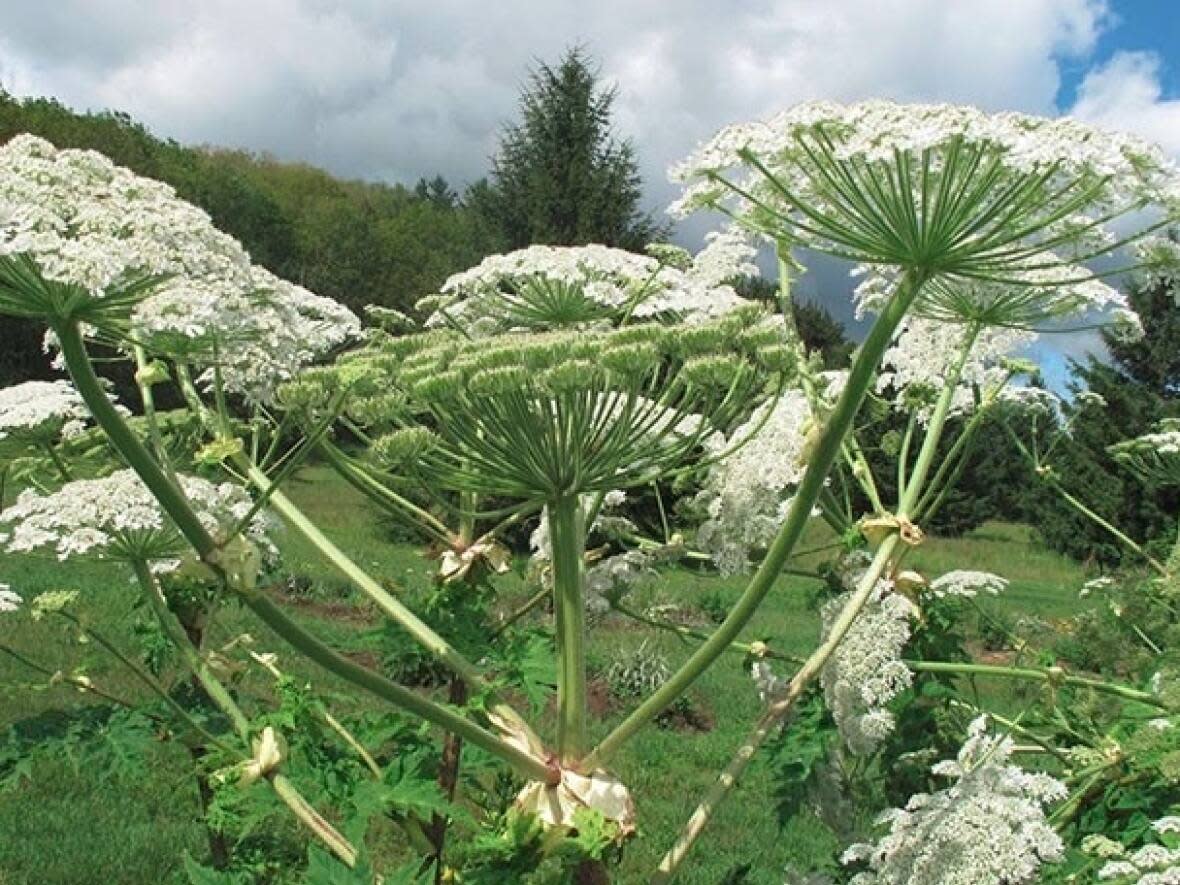Invasive plant known as Giant Hogweed discovered in Don Valley area, Metrolinx says

A plant considered to be a dangerous weed has been discovered in the area of the Don Valley, Metrolinx says in a warning to the public.
Metrolinx, the province's regional transit agency, said in the warning this week that its crews found Giant Hogweed, a noxious and leafy plant that is an invasive species, along the tracks of the Richmond Hill train corridor and in Toronto parkland recently.
The plant is growing near the rail corridor between E.T. Seton Park in the east and the Bayview on-ramp to the Don Valley Parkway on the west, Metrolinx said.
Giant Hogweed, also known as giant cow parsnip, has a clear watery sap that contains dangerous toxins, according to the Ontario environment ministry. Anyone exposed to the sap can get severely burned if those areas are then exposed to sunlight. Symptoms, that is extremely painful blisters, appear within two days of exposure.
"Giant Hogweed has the ability to spread readily and grows along roadsides, ditches and streams," Emily Cosburn, Metrolinx's manager of environmental safety, said in a news release.
"That's why we immediately report these sightings to the Ontario Invasive Species reporting portal and we're actively working on removing the plants from Metrolinx property."
According to the city, Giant Hogweed has been identified in many parks and trails across Toronto and staff are actively trying to control it. The city said residents shouldn't try to remove the plants themselves but should call 311 when they see it encroaching on trails.
"City staff routinely monitor parks, trails and green spaces for hazardous and invasive plant species and take action where necessary, including removing it or installing signs at trail entrances," Alex Burke, spokesperson for the city, said in the release.
The city will remove Giant Hogweed that is growing within one metre of a trail edge. Any Giant Hogweed growing in natural environment areas beyond one metre are usually not disturbed to provide benefits to surrounding wildlife, the city said.
According to the ministry, Giant Hogweed can grow 2.4 to 4.2 metres tall and has unevenly shaped leaves. It produces clusters of white flowers in the shape of an umbrella.


